
China has a tradition of sculptural creations over thousands of years. However, before the 20th century, sculpture was usually regarded as a handicraft and the identity of a sculptor was generally an unknown “craftsman”. For the concept of “pure art” and “art discipline”, sculpture was not introduced into China as with Western culture until the beginning of the 20th century. The discipline of sculpture at Central Academy of Fine Arts and its academy system were also imported from this period. This means that the comprehension of the constructive process for the sculpture discipline, needs to be put into the framework of “l(fā)ocal and foreign”, but there is no strict duality, because even the traditions from the West have differentiated appearances and local national traditions have always participated in the construction and growth of the entire teaching system of sculpture at CAFA.
On November 20, 2020, “The Gene of Sculpture: Various traditions in the construction of sculpture teaching system in CAFA in the 1950s and 1960s”, a series of exquisite exhibitions from the Collection of CAFA Art Museum, was officially unveiled on the fourth floor of CAFA. The exhibition project features the Collection of CAFA Art Museum started in 2012. However, due to the lack of collection of sculptures, its historical features have not been fully reviewed in a systematic exhibition. After efforts of collection, addition and sorting by the Collection Department of CAFA Art Museum in nearly ten years, the construction process of the teaching tradition for sculpture has gradually become clear. This exhibition presents the preliminary research achievements to the public.

Exhibition View
The teaching traditions in the CAFA Department of Sculpture have been passed down from generation to generation like “the gene”. Using the metaphor of “the gene of sculpture” as a clue, this exhibition sorts out the three traditions rooted in the teaching system of the CAFA Department of Sculpture during different periods in three sections: the classical realism tradition from the West, the perfected teaching system from the Soviet Union and the Chinese native national traditions. In what historical background was the “gene of sculpture” conceived? What role did different traditions play in the formation of the CAFA teaching system of sculpture? The exhibition sorts out these issues through the display of documents, videos and related works.
Tradition I: French Sculpture Experience
The establishment of the CAFA Department of Sculpture can be traced back to the “Sculpture Department” established in 1934 by the predecessor of CAFA, “National Art School in Beiping”. At that time, teachers were mainly Chinese students who had studied sculpture at Ecole Nationale Superieure des Beaux-Arts[1]. With the implementation of the work-study program initiated by Cai Yuanpei, the Director for the Ministry of Education at that time, a large number of young people went to Europe to study and explore new ideas and cultures. For the young artists, Paris which has a strong artistic environment, became their enthusiastic goal.
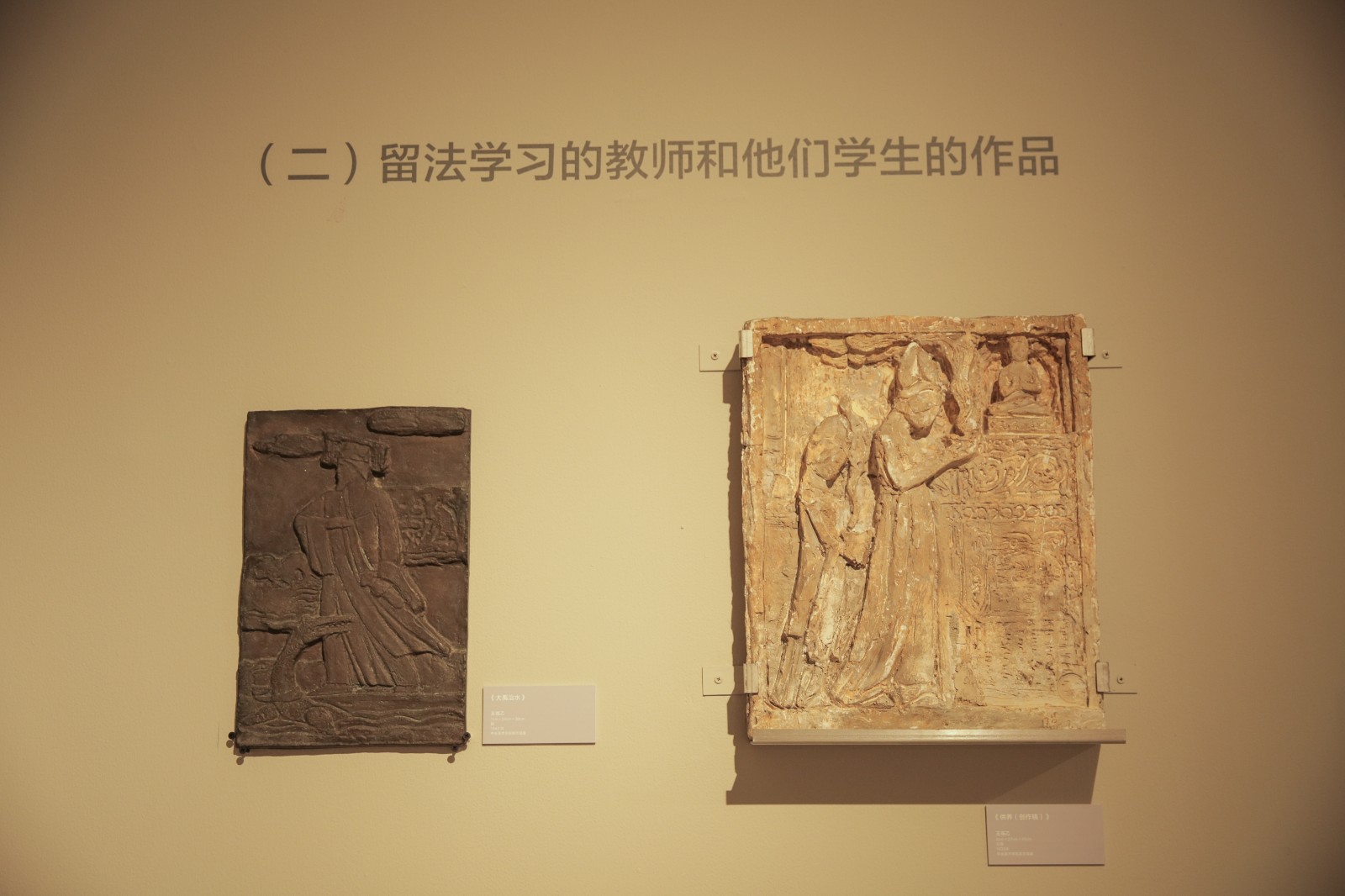
Works by Teachers Returned from France and Their Students
In 1928, under the influence of this trend of studying abroad, Liu Kaiqu and Zeng Zhushao went to France with Cai Yuanpei’s funding. In the following year, Liu Kaiqu was admitted to Ecole Nationale Superieure des Beaux-Arts and studied in the studio of Jean Boucher[2], who was a disciple of the French sculptor Auguste Rodin. He was appreciated for his hard work and solid basic skills. In 1931, he began serving as Boucher’s assistant. This experience gave Liu Kaiqu a deeper understanding of Boucher’s philosophy in teaching. According to his memory, Boucher advocated free creativity and emphasized originality and genius. But in terms of basic modeling rules, Boucher still emphasized realism and focused on rigorous training in sketching to exercise students’ observation ability. [3] Zeng Zhushao transferred from Ecole Nationale des Beaux-Arts de Lyon to Ecole Nationale Superieure des Beaux-Arts in 1932. He also studied under the guidance of Boucher. He observed and learned a lot from Rodin’s work in Paris museums and inherited a passion for humanistic traditions from French sculpture in his creations.
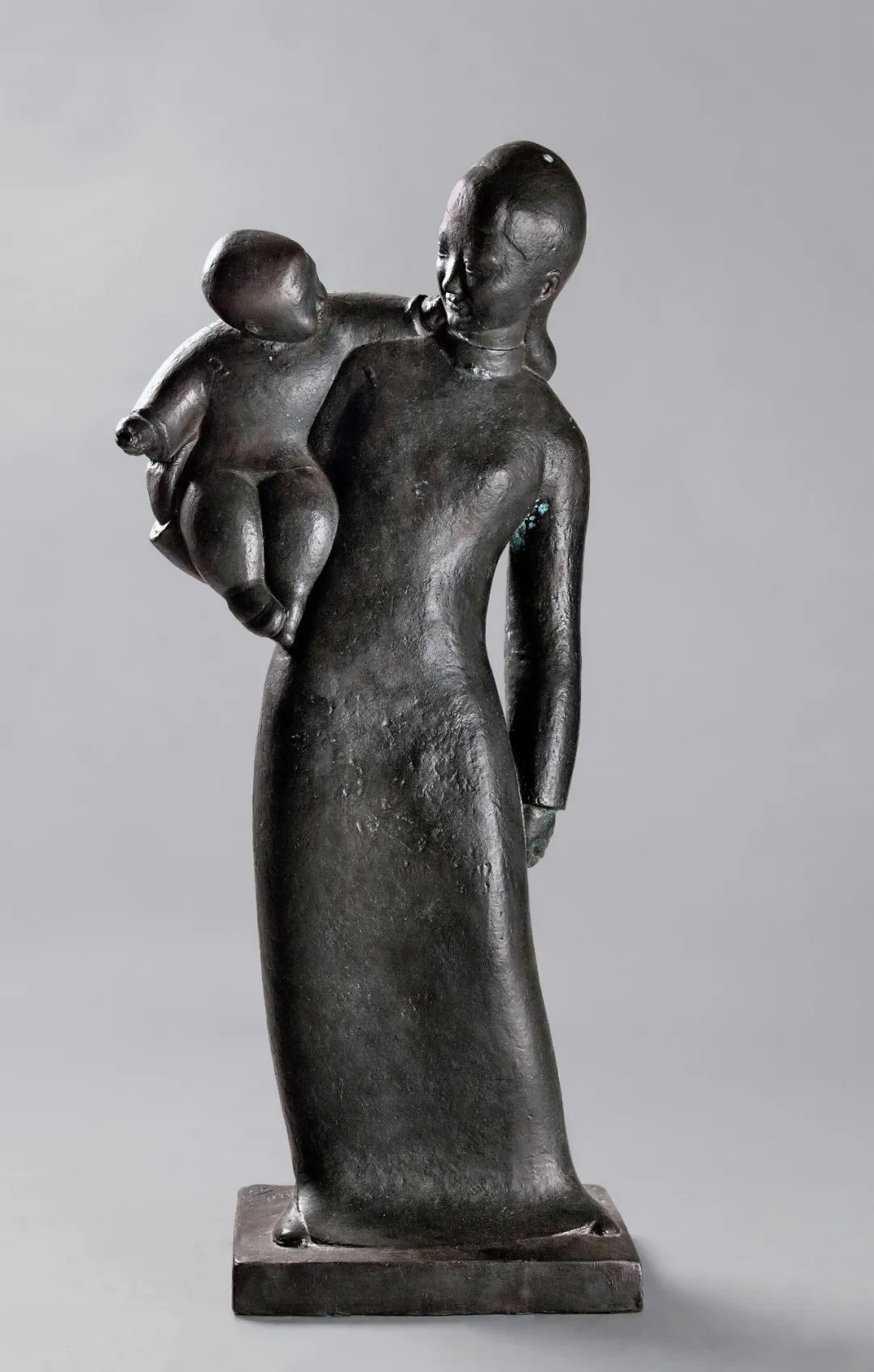
Hua Tianyou Maternal Love 1947 Bronze
Collected by CAFA Art Museum Donated by the family of Hua Tianyou in 2008
In 1932 and 1933, Wang Linyi and Hua Tianyou were admitted to the Ecole Nationale Superieure des Beaux-Arts and awarded the the first place respectively, showing extraordinary skill and talent in their profession. The two studied in the studio of Henry Bouchard [4]. The potential “socialist tendency” in Bouchard’s work on labor has influenced Wang Linyi’s “National Unity” and “Return to the Embrace of the Motherland” and other serious themes. Hua Tianyou also inherited Bouchard’s creative ideas, and constantly explored the methods of refining shapes from ancient Greek and Egyptian sculptures. The achievements of his in-depth research were highly praised by the French official art institutions: “Contemplation” in 1943 won the Gold Medal in Paris Spring Art Salon. “Bombing” in 1946 was collected by the French Ministry of Education, and “Maternal Love” in 1947 was collected by the Municipal Government of Paris, all of these works are presented in the first section of this exhibition.

Hua Tianyou Contemplation 1943 Bronze Collected by CAFA Art Museum Donated by the family of Hua Tianyou in 2008
Among them, Wang Linyi, Hua Tianyou, Zeng Zhushao and others went to work as teachers in the sculpture department of National Art School in Beiping after they returned to China, and cultivated Wang Chaowen, Ling Chunde, Situ Jie and other major teachers for the CAFA Department of Sculpture. After the National Art School in Beiping was renamed Central Academy of Fine Arts (abbr. CAFA) in 1950, President of CAFA Xu Beihong, invited sculptors who returned from France in the 1930s and 1940s, went north to teach in CAFA and formed the first large-scale teaching team of CAFA Department of Sculpture. The teaching model based on the French sculpture experience was basically been established since then.
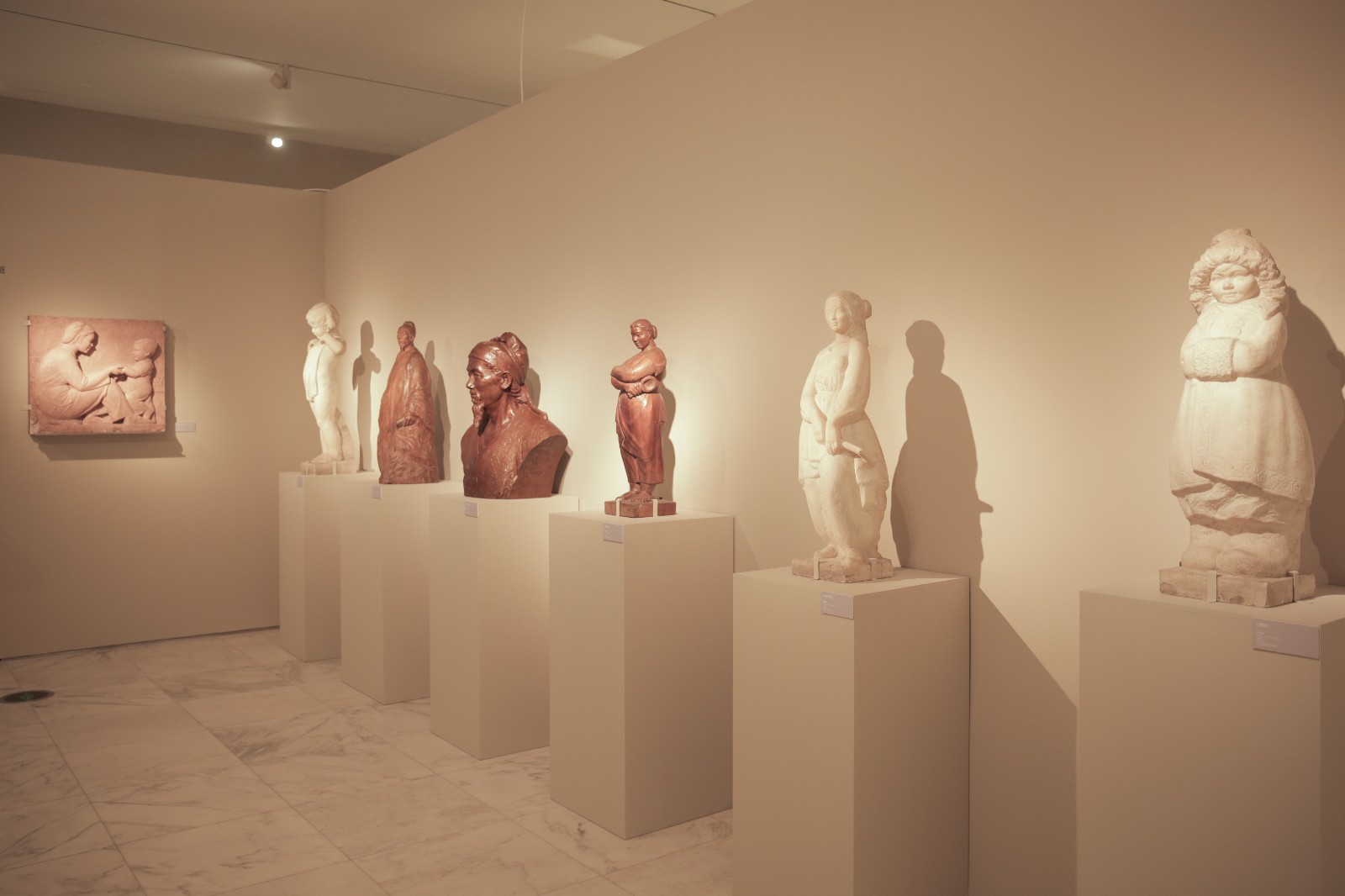
Exhibition View
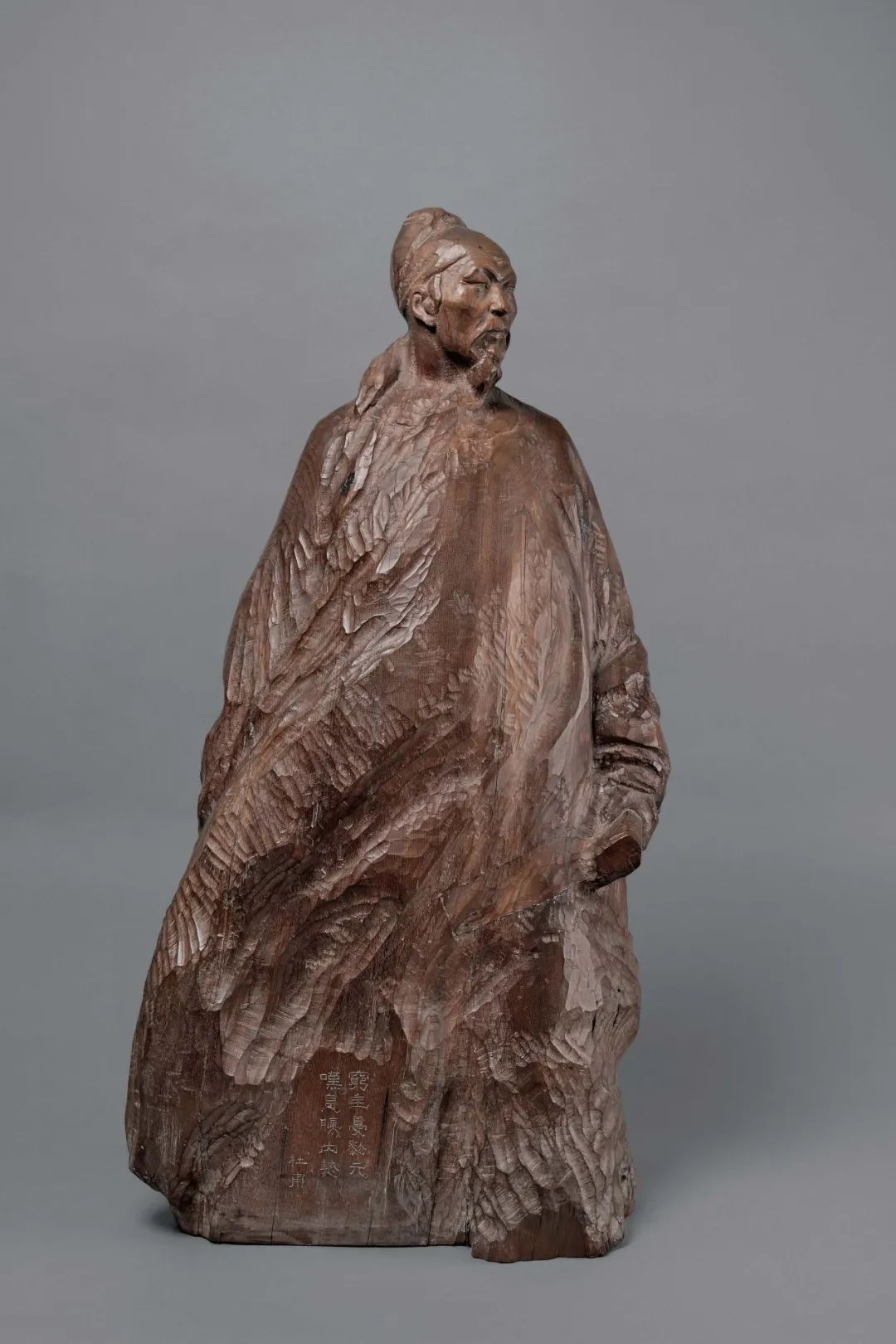
Ye Yushan Du Fu 1963 Wood Graduating from the wood carving class in 1963 Collection of CAFA Art Museum
In 1959, after Liu Kaiqu [5] transferred from Zhejiang Academy of Fine Arts to Central Academy of Fine Arts, he applied his years of accumulated teaching experience in classrooms. He opened a sculpture graduate class from 1960 to 1963 and trained talented students including the later President of Sichuan Academy of Fine Arts. Famous sculpture art educators such as Ye Yushan, Tian Jinduo and Chen Shuguang. Their works were frequently published in fine art magazines and selected sculptural works at that time, reflecting the recognition of the teaching achievements of CAFA Department of Sculpture by the art circle.
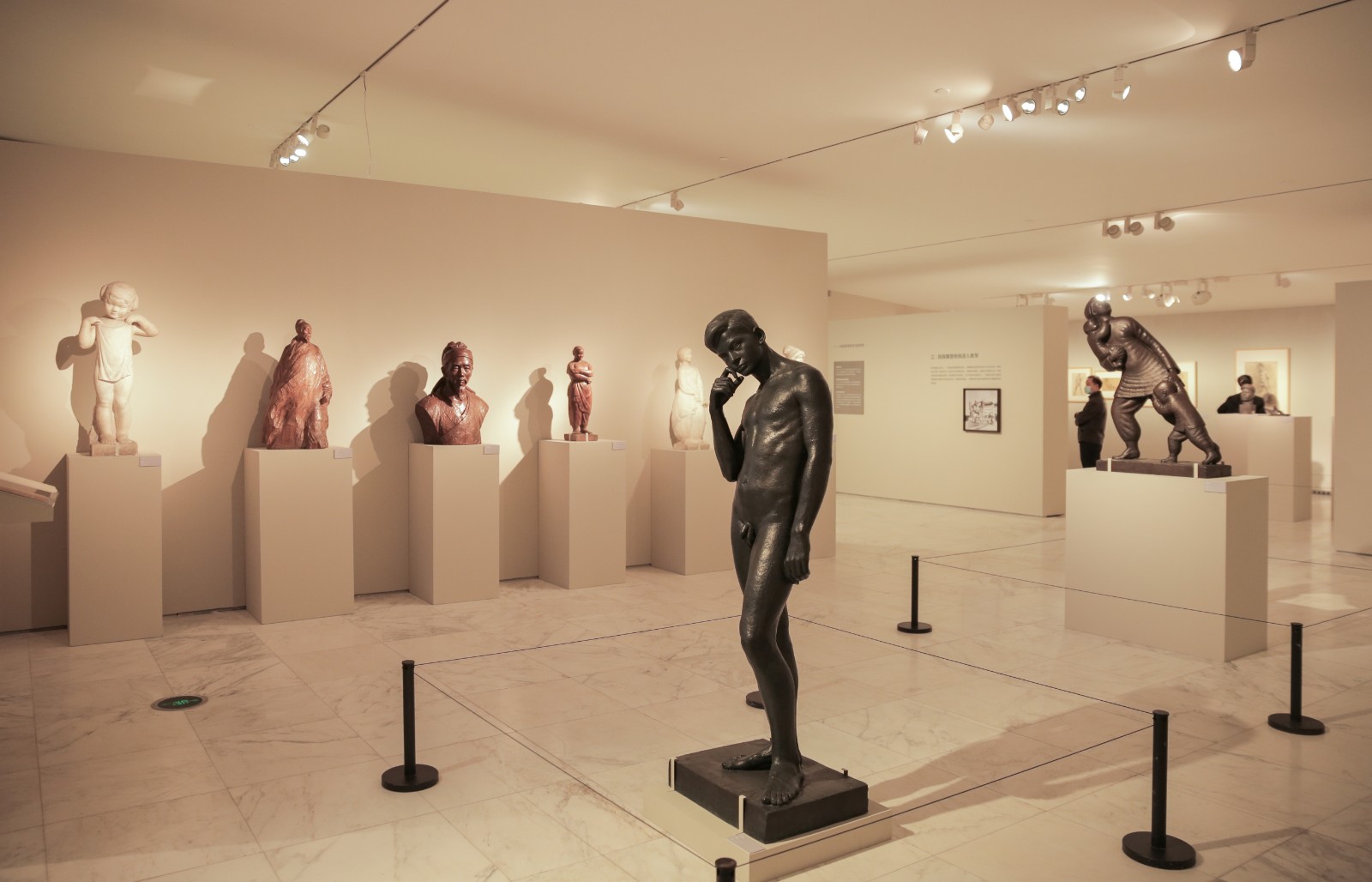
Exhibition View
It can be said that the “French sculpture experience” introduced by the first generation of teachers returned from France, such as Liu Kaiqu, Wang Linyi, and Hua Tianyou, established the basic teaching orientation of realism in CAFA and also constituted the development of mainstream Chinese modern art. Since Chen Duxiu proposed the “art revolution” during the New Culture Movement, “realism” has been praised by the literary and art circles as a new concept of eliminating social backwardness. After the founding of People’s Republic of China, “realism” coincided with the popularization of “socialist art”.
Tradition II: The Introduction of Teaching from the Soviet Union
In the early days of the founding of People’s Republic of China, although the teachers who returned from France were still deepening their French sculpture experience into their teaching practice, they were influenced by the “l(fā)eaning to one side” foreign policy. Many cultural fields, including fine arts, set off the learning boom from the Soviet Union. The CAFA Department of Sculpture thus introduced the teaching system of the Soviet Union to guide the professional construction of the entire sculpture department through the teaching strategy of “sending out” and “inviting in”. Since 1953, CAFA sent Qian Shaowu, Cao Chunsheng, Situ Zhaoguang and other students to the Repin Academy of Fine Arts in the Soviet Union to study. In 1956, Klindukhov from the Moscow State Academic Art Institute named after V.I. Surikov was invited to open a two-year sculpture training class.

Su Hui The Statue of Marx 1958 plaster coloring CAFA Art Museum Collection Donated by Su Hui’s family in 2017
The second section of the exhibition combines the memoirs of students studying in the Soviet Union, Klindukhov’s teaching materials and other documents, using Cao Chunsheng’s sketches and three small statues of Su Hui, a graduate of Klindukhov’s sculpture training class, as references to review this period of history.
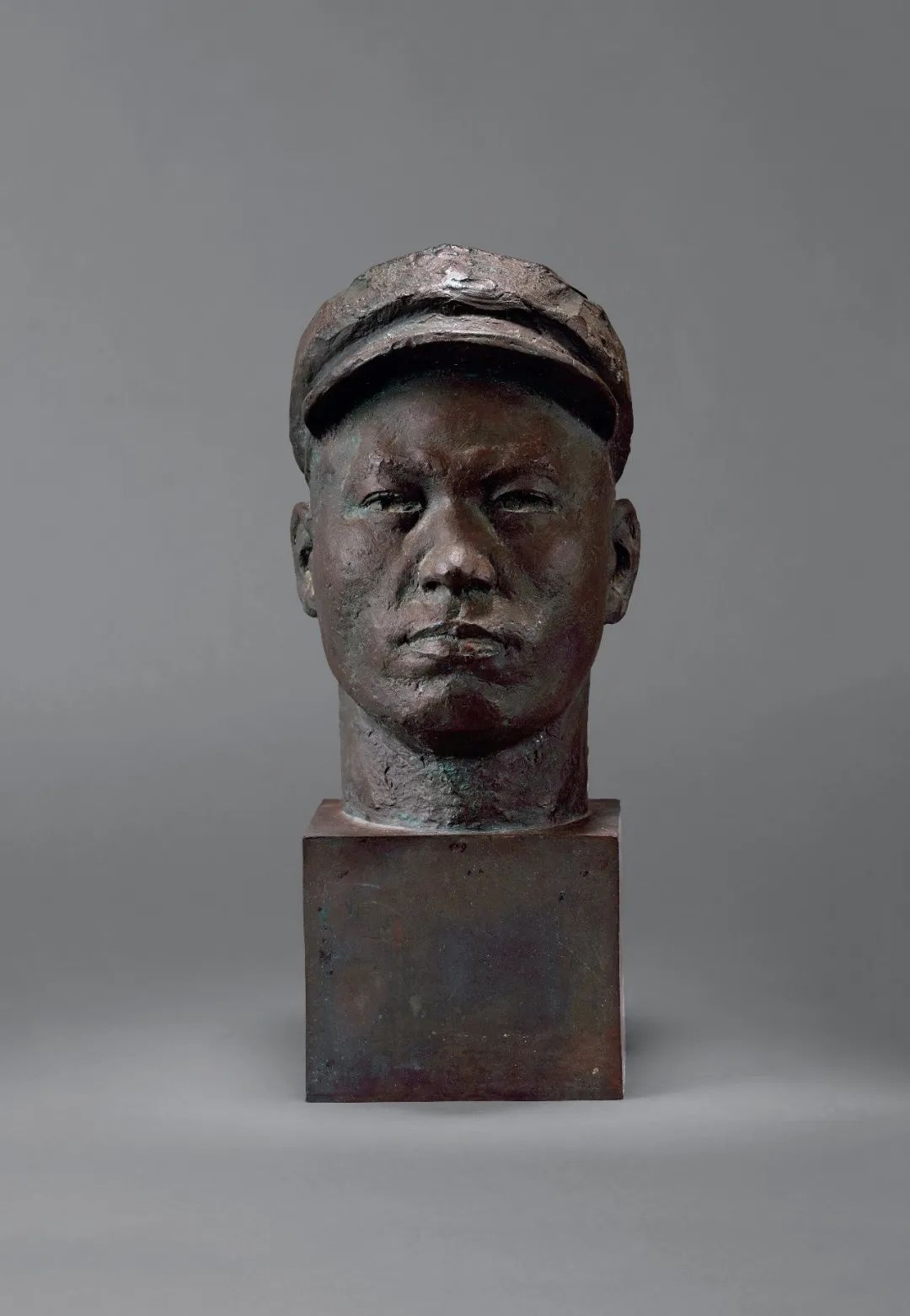
Su Hui A Warrior with Hat 1961 bronze Collection of CAFA Art Museum Donated by Su Hui’s family in 2017
Qian Shaowu talked about his personal experience when studying in the Soviet Union in his article “Review of 38-year History of Sculpture Department”. In fundamental training, compared with French sculpture which emphasizes the concept of shape, volume and light, Soviet sculpture pays more attention to bones, movement, muscle anatomy and overall observation and a generalization of capabilities, and it’s necessarily combined with certain political needs in creation. [6]
In the class notes saved by Su Hui and other students, it can be seen that Klindukhov formulated a detailed teaching plan in accordance with the Soviet teaching system: creative training every morning, from the head to the body, forming the easy part then moving on to difficult one, step by step. In the afternoon, basic training such as sketching and composition were strengthened. Klindukhov often led students out of the classroom to experience life, sketch and thus cultivated students’ creative thinking.

Cao Chunsheng’s Sketches
Although the Soviet sculptural tradition also originated from Western Europe, with realism at its core, it had formed a unique style of “socialist realism” in the middle of the 20th century, and the “Pushkin Monument” and “The Monument for Heroic Defenders of Leningrad” and other large-scale monumental sculptures emerged. Although Liu Kaiqu was a teacher from the generation who studied in France, his admiration for Soviet large-scale public monumental sculptures can be seen from his article “Learning from Soviet Sculpture” published in Fine Arts in 1954. The relief sculptures of the Monument to the People’s Heroes created by him and other faculty members of the CAFA Department of Sculpture and the “Top Ten Architectural Sculptures” in Beijing in the 1950s were all influenced by such creations in the Soviet Union.
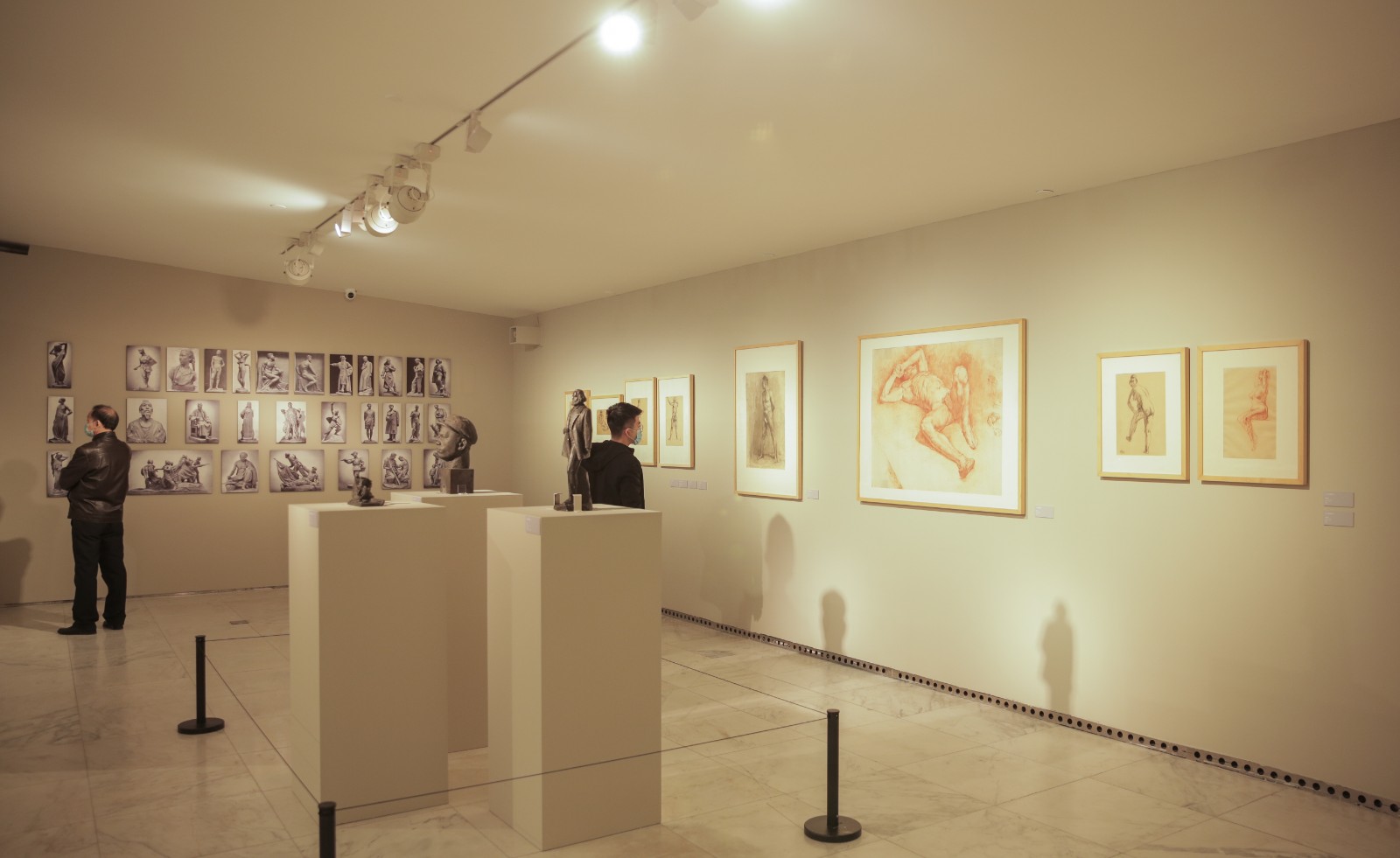
Exhibition View
In addition to artistic style and teaching methods, CAFA Department of Sculpture also absorbed the experience from Soviet Union in enrollment, management, and graduation assessment systems. In 1958, the graduation defense of Klindukhov’s sculpture training class was the first defense since Chinese art education introduced a Soviet experience. The defense first required the author to state the creative intention and creative process, and then the instructor and art theorists analyzed it, and finally the review committee and participants spoke openly.
In the 1960s, with the successive return of teachers from the Soviet Union, the second-generation teaching force of the CAFA Department of Sculpture was formally formed. The two generations of teachers who studied in France and the Soviet Union taught together. They were closer to the social reality in terms of aesthetics and more composite and complete in the teaching system. Students who graduated from the Klindukhov’s Sculpture Training Class went to teach in various art academies, so that the Soviet teaching experience and model spread throughout the country.
Tradition III: National Sculpture Traditions Were Introduced to Teaching
From the beginning that CAFA Department of Sculpture imitated France, so the process followed the road of the Soviet Union, there have always been questions about the nationality of sculpture. The establishment and development of a new nation requires the support of a corresponding national culture and art, and the “sculpture gene” of CAFA needs to be built on the “national gene”.
As early as the period of National Art School in Beiping, the “sculpture group” under the Sculpture Department offered courses on traditional techniques such as bamboo carving, seal carving, and sealing skills, indicating that the early teaching construction did not ignore Chinese national traditions due to the Western academy system. The sculptors studying overseas at that time also showed strong national consciousness. From 1935 to 1936, the Chinese and British governments jointly organized the “International Exhibition of Chinese Art” in London. According to Zeng Zhushao’s memory, after visiting the exhibition, he had a higher comprehension of Chinese national traditions and was determined to study and promote sculpture with Chinese characteristics.[7]

Woodcarving Arhat Anonymous Ming Dynasty Collection of CAFA Art Museum
In the 1950s and 1960s, driven by the call of nation, the national consciousness of the teachers, and the existing teaching experience, “l(fā)earning from national traditions” was also incorporated into the construction of the CAFA sculpture teaching system.
In 1953, the “People’s Heroes Monument Expedition Team” composed of faculty members from CAFA Department of Sculpture went to ancient sculpture relics across the country and inspected tens of thousands of works from the Han Dynasty to the Ming and Qing Dynasties, hoping to incorporate national characteristics into the relief sculptures of the People’s Heroes Monument. In the process of creation, Wang Linyi’s “May 30th Movement (First Draft)” on display is one of the eight monument reliefs. He borrowed the image form of the Northern Wei Dynasty relief “The Worship from Emperor and Empress to Buddha”. The marching workers are in a parallel composition with a horizontal dynamic, as if it extends beyond the screen infinitely. [8]

Chaozhou Wood Carving
Since the “People’s Heroes Monument Expedition Team”, it has become a tradition in CAFA to use the spring and autumn to investigate ancient sculptures. Some ancient sculptures have also been turned into plaster sculptures and used in teaching. In terms of academic research, teachers from the Department of Sculpture such as Wang Linyi, Hua Tianyou, Zeng Zhushao, and Liu Kaiqu divided the work according to different dynasties and systematically sorted out the remains of these ancient sculptures, edited them into a book, and published important records such as “Ancient Chinese Sculpture Collection”.

Clay Figure Zhang
In addition, folk sculpture techniques have also been introduced into teaching. Young teachers traveled to various places to learn about traditional techniques such as Wutaishan clay sculpture, Yunnan casting copper, Chaozhou wood carving, etc. At the same time, they also invited handicraft experts such as Dough Figurine Tang, Clay Figure Zhang, and Shiwan sculpture by Liu Chuan into the college teaching system. On this basis, the CAFA Department of Sculpture established national and folk sculpture studios and formulated a systematic teaching plan.
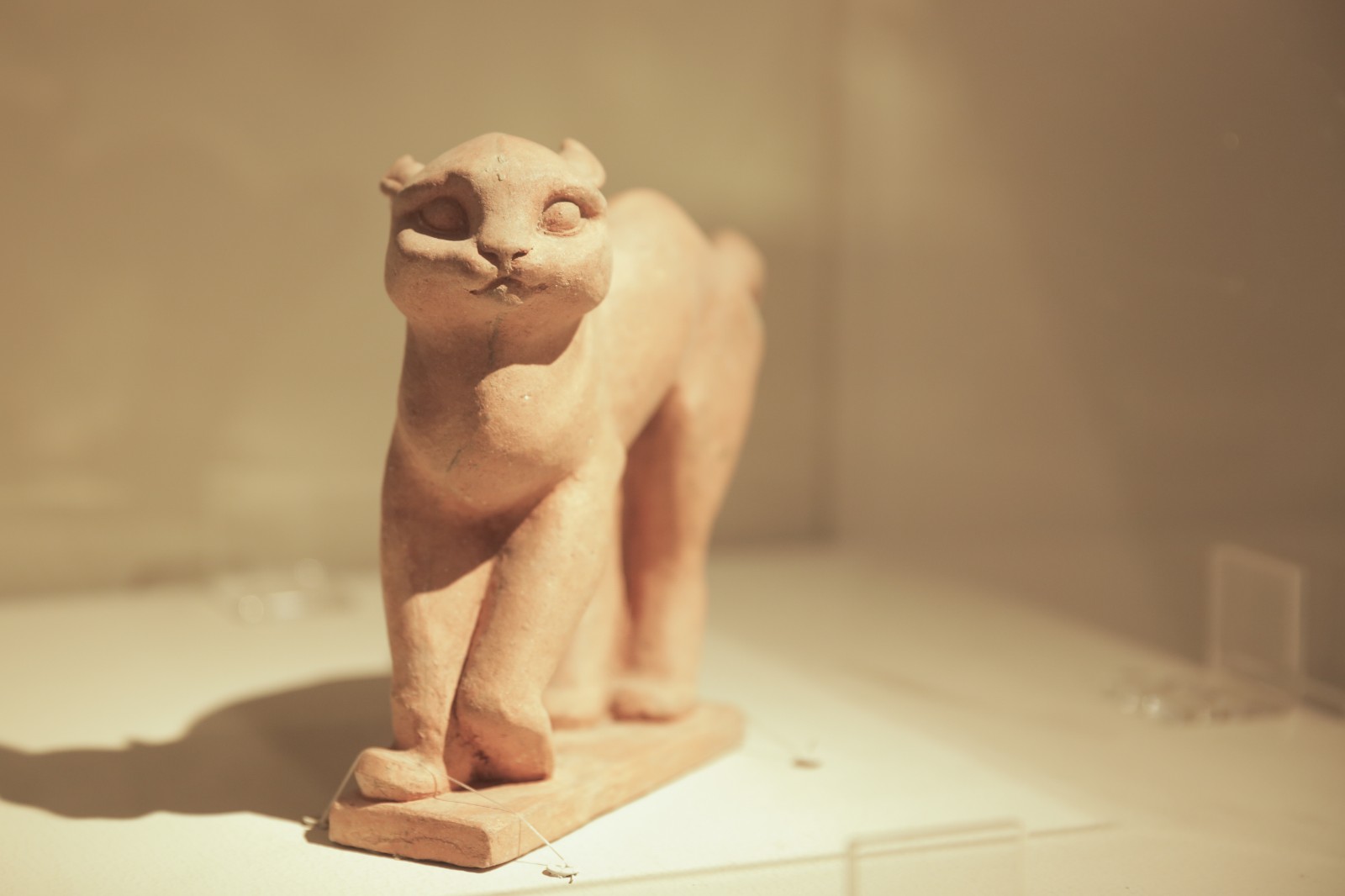
Wang Henei (Renee Yunne Nikel) Standing Kitten 1950s Red Pottery Collection of Central Academy of Fine Arts
It is worth noting that the third section of the exhibition ends with Wang Henei's work “Standing Kitten”. This work adopts minimalist lines and has a sense of simplicity. Wang Henei was from France and was the wife of Wang Linyi. In 1960, she formally joined the teaching team of the CAFA Department of Sculpture. She has been immersed in the creation of animal sculptures since the 1950s. Together with Wang Linyi, she inspected a large number of sculptures from the Qin and Han dynasties. Her work does not only possess the precise anatomical structure of Western sculptures, but also shows the ancient charm of animal stone carvings from the Han Dynasty and further conveys the possibility of the integration of different traditions from France and China.
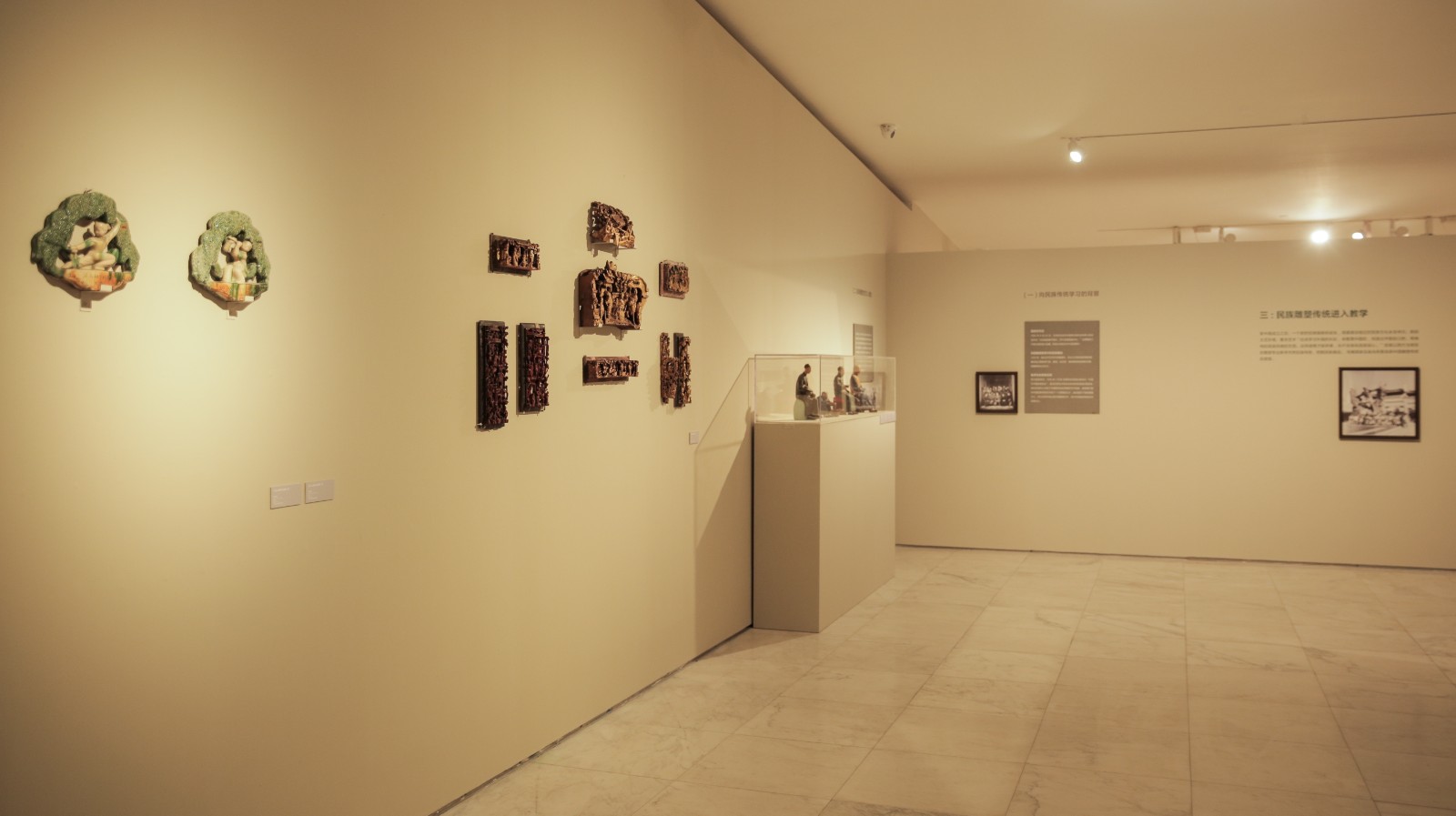
Exhibition View
The historical process of the introduction of national sculpture traditions into teaching does not only reflect the national consciousness of teachers and students at the CAFA Department of Sculpture but it also enables the development of a teaching practice that gains more vivid vitality after continuous integration and re-creation.
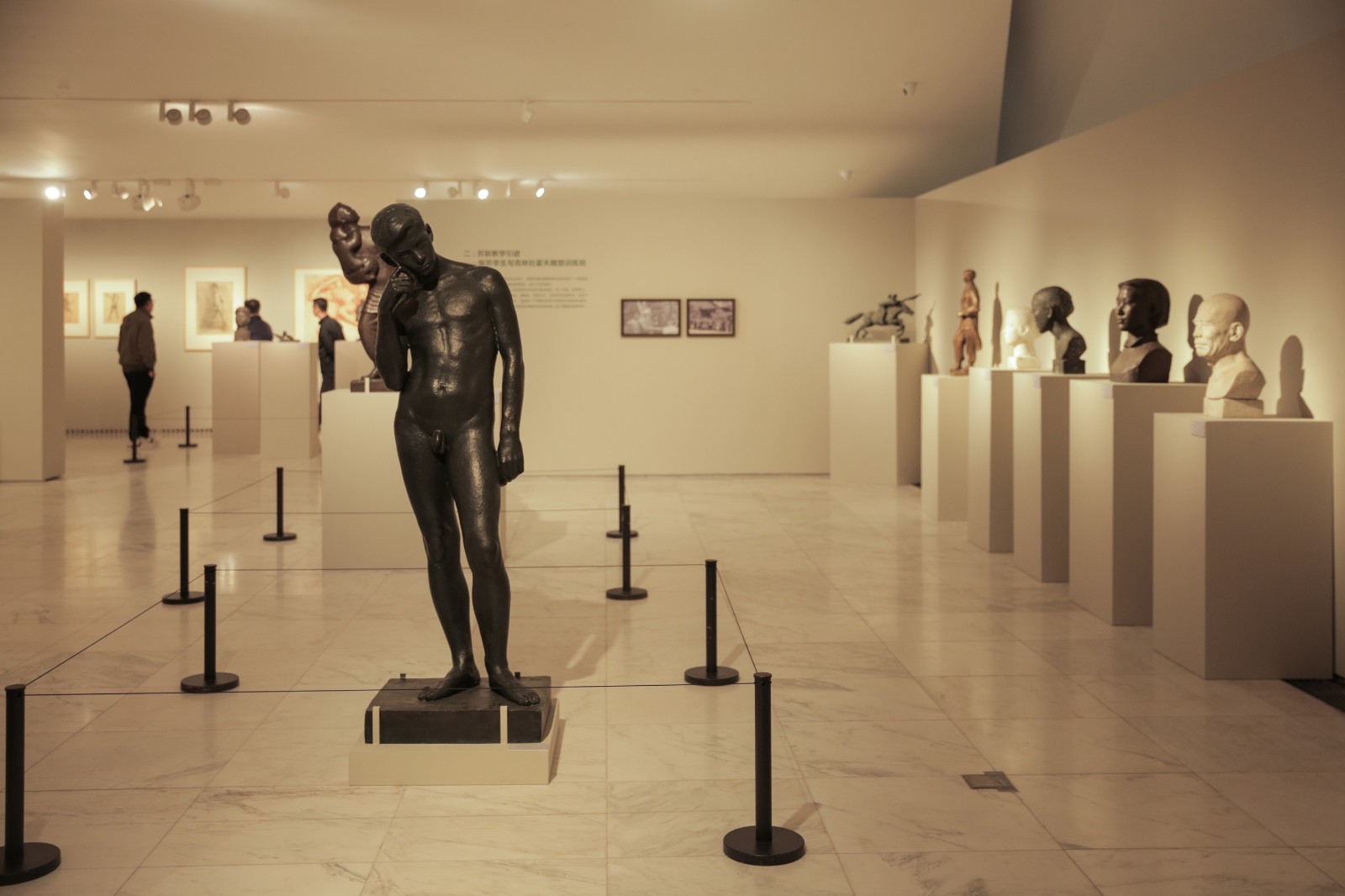
Exhibition View
“Tradition” does not mean to be “ancient”. Looking back at the early construction of the CAFA Department of Sculpture, the construction of each teaching tradition is always promoted by the younger generation of sculptors, and their artistic practices are the “new atmosphere at the time,” closely related to the epochal pause. Liu Kaiqu evaluated in his article “The New Atmosphere of Sculpture Creation” in 1959. Although young sculptors and students from the sculpture departments at various colleges were not mature enough in their creative experience, they dared to explore and innovate. “We are excited about the achievements of these young sculptors and we feel excited to add a lot of new strength to the world of sculpture.” [9]
Throughout the history of modern Chinese art, the “gene of sculpture” is actually a concept of growth. Nowadays, new “genes” are also being shaped. After the reform and opening up, modernist sculpture emerged into China, which also had a significant impact on the contemporary sculpture teaching practice of CAFA. Among them, the bold experiments conducted by the younger generation of teachers and students played a key role. “The Gene of Sculpture” does not only review the various teaching traditions of CAFA in the 1950s and 1960s, but it also highlights the pioneering spirit of avant-gardes through this period of history.
Text by Hu Zihang, translated and edited by Sue/CAFA ART INFO
Photo by Hu Sichen/CAFA ART INFO, Courtesy of the Organizer
References:
[1] In the early 1930s, Wang Jingyuan and Wang Linyi who had studied abroad are in the exclusive records of National Art School in Beiping. Due to the outbreak of the Anti-Japanese War, National Art School in Beiping and the Hangzhou Academy of Art (formerly Zhejiang Academy of Fine Arts, now China Academy of Art) were merged into the National Academy of Arts. If you consider the composition of the teachers at this time, there were Li Jinfa, Cheng Manshu, Zhou Qingding who studied in France, Zhang Chongren who studied in Belgium, and Xiao Chuanjiu who studied in Japan, etc.
[2][4] About Bouchard and Boucher, Wang Wei once introduced in the article “Wang Linyi’s Artistic Enlightenment and Western Learning (1908-1935)” (published in Sculpture, Issue 1, 2016). At that time, there were 4 sculpture studios at Ecole Nationale Superieure des Beaux-Arts. Among them, the tutors of the 3 male studios were Jean Boucher (1870-1939), Paul Landowsky (1875-1961) and Henri Louis Bouchard (1875-1960). Boucher and Bouchard mentored most of the Chinese students. Because their Chinese transliterations were similar, Chinese students used to call Bouchard as Boucher. Therefore, for a long period of time, many people in China often confused Boucher and Bouchard.
[3] Wang Yao, “Looking through Liu Kaiqu and the Sculptors of That Time”, Shanghai Art Review, No. 5, 2016.
[5] In 1933, Liu Kaiqu received a letter of appointment from Lin Fengmian, the President of the National Hangzhou Academy of Art, so he gave up his plan to continue his studies in Paris and returned to China to devote himself to the education of sculpture and went to the Hangzhou Academy of Art at that time. (Referring to Fu Chunyu, “Pioneering and Development: Liu Kaiqu Sculpture Art Creation and Theoretical Research”, Shanghai University, 2015 PhD thesis)
[6] Qian Shaowu, “Review of 38-years History of Department of Sculpture”, Art Research, No. 2, 1988.
[7] Excerpts from the introduction to the third section of the exhibition “National Sculpture Traditions Were Introduced to Teaching”.
[8] Liu Shiming, “Mr. Wang Linyi’s Sculpture Art”, Fine Arts, No. 6, 1987.
[9] Liu Kaiqu, “The New Atmosphere of Sculpture Creation”, Fine Arts, No. 10, 1959.

About the exhibition
Dates: 2020/11/20-2021/03
Venue: Gallery 4F, CAFA Art Museum




























